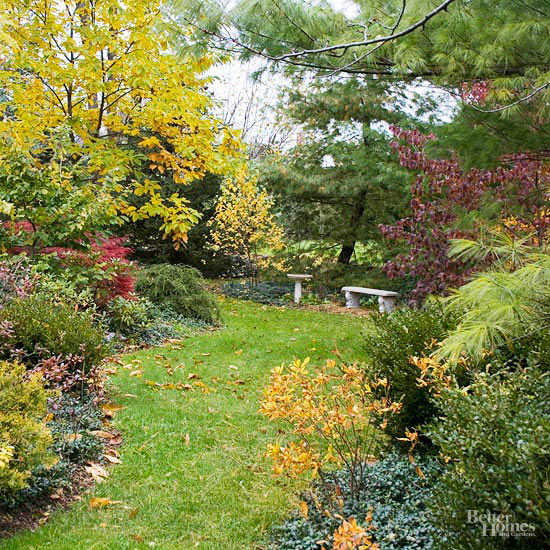






A long, hot summer sounds like torture for your lawn. Summer's scorching days and improper lawn maintenance turn a lawn brown and weak, allowing weeds, insects, and disease to infiltrate easily. The best way to deal with summer lawn crises is to prevent them before they start.
"What most homeowners don't realize is that they're dealing with something that happened a month ago," says Doug Fender, executive director of the Turfgrass Resource Center, a nonprofit group in Illinois. "They see the symptoms and treat the lawn, but it will take another month for the symptoms to go away. They don't think about the curatives that could have prevented it."
To avoid summer problems, start tending your lawn early in the growing season. The best prevention is a lawn that is vigorous and thick. It will ward off weeds, insects, and diseases better than any other measures.
In the market for a new lawn mower? Here's how to find the right one for you.
continue reading belowIf you live in a hot dry climate, cool season grasses will go dormant in midsummer and turn brown. This isn't necessarily a bad thing; unless you have a prolonged drought, the turf will come back fine once the weather cools off and the rain comes.
If you are serious about keeping a lawn green during the hot summer months, apply one inch of water to the lawn each week (unless Mother Nature helps you out). The worst approach you can take is to allow the grass to go dormant, then water it long enough to start growth, then let it go dormant again.
Let grasses grow a little longer during the warmer months. The extra shade will help keep the root zone cool, and reduce water loss from the soil. Don't fertilize or apply weed killers at this time.
In the North, early- to mid-fall is the best season to attack lawn weeds if you choose to use chemical controls. Most weeds are storing food to hold them through the winter, and they will take up the chemicals more readily at this time.
Cut the lawn a bit shorter in Fall, which will help the ground dry out more quickly the following Spring. However, don't cut the grass shorter than the recommended range.
If you live in the North, you can apply fertilizer any time in the Fall. This is also a good time to aerate the soil, which allow water and air to enter the ground more readily.
Despite your best efforts early in the season, the lawn may still have summer problems. Here are some common ones and ways to handle them.
Weeds: When weeds are obvious as you scan the lawn, they are a problem. If you had weeds last year, spray a herbicide in late April and May. Don't broadly apply any type of herbicide in the summer; that's when the lawn is most heat-stressed. It's still possible to remove any weed -- such as broadleaf dandelions, clover, and chickweed, as well as grass weeds including crabgrass and annual bluegrass -- by hand. For larger areas (not the whole lawn), spot-treat any problem with herbicides. Soap herbicides are less toxic than other herbicides.
Irregular brown patches: Pieces of lawn that come up easily are symptoms of grubs -- the larval stage of beetles that eat grass roots. Pull up a section of grass and examine the soil for white larvae. If you see larvae, spike the soil 2 inches deep in early fall, or kill grubs with special grub insecticides sold at nurseries.
Moss: Compacted, shaded acidic soil with drainage problems is ripe for a moss takeover. Rake out moss as soon as you find it or apply a moss-killer sold at nurseries. Reseed bare spots in fall or put in sod in spring or fall.
Other strange patterns or brown-yellow spots: It's extremely difficult to diagnose whether a lawn's problem is a disease, an insect, a certain weed, or the next-door neighbor's dog visiting your lawn. Take a 2x2-inch plug of grass and soil to a local nursery or the cooperative extension service, and ask the staff to identify the problem and the treatment. Examine the entire lawn so you can describe any unusual patterns or colors.
Copyright © www.100flowers.win Botanic Garden All Rights Reserved